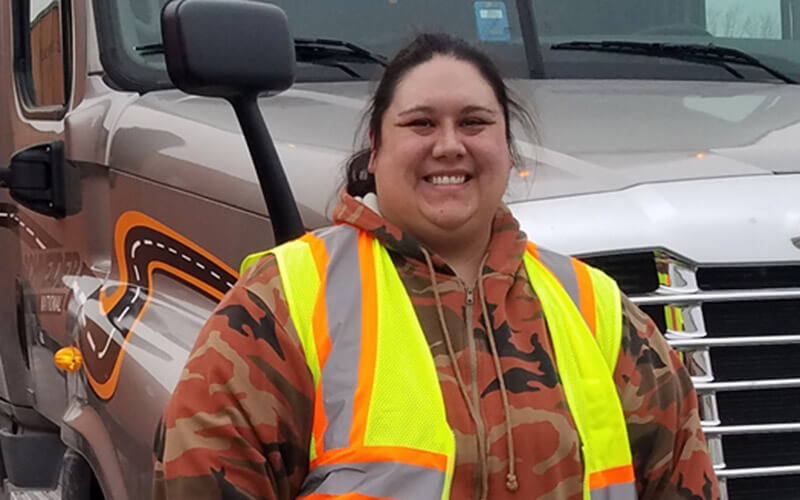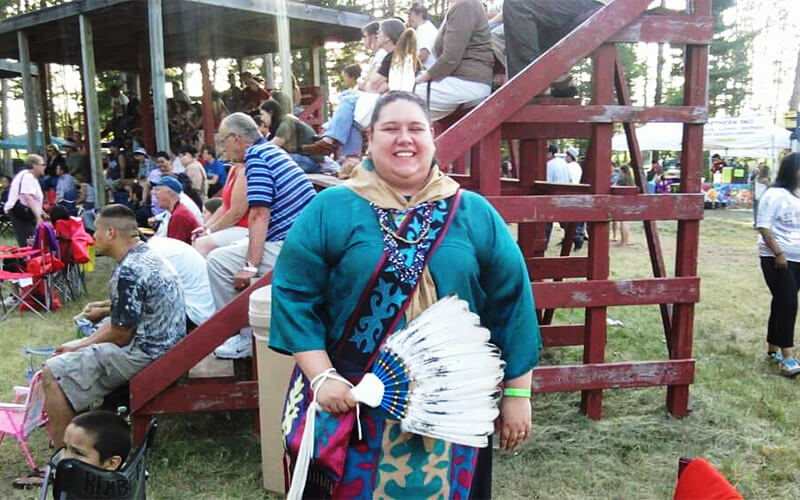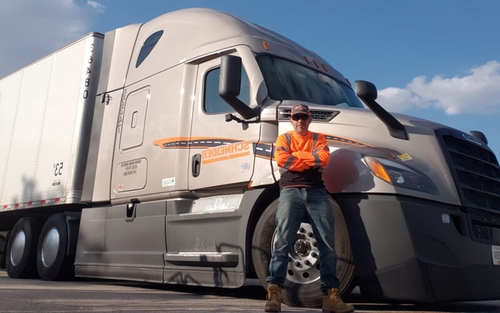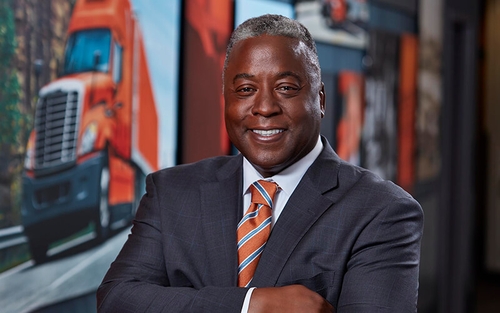Kat Burt: Representing her Menominee heritage


By The Schneider Guy
Estimated reading time: 3 minutes
At the turn of the 19th century, the Menominee nation occupied nearly 10 million acres of land extending through what is now central and mid-eastern Wisconsin and part of Upper Michigan.
One of the few Native American tribes to never have left their original ancestral land, the Menominee Reservation now lies in the heart of their former territory in Kenosha, Wis.
Just an hour drive southeast is Schneider’s corporate headquarters – where we meet Kat.
Kotanee “Kat” Burt is a proud member of the Menominee nation who started her career on Schneider’s customer service team seven years ago. Today, Kat works in the enterprise accounts branch of the department, where she handles creating and tracking orders, anticipating problems and providing creative solutions for one of our major retail clients.
Here she shares some of her insights into the Menominee culture, as well as some of the challenges Native Americans face to this day.
Growing up in a culture built on bond
Kat describes the Menominee culture as one defined by a sense of kinship.
“When you are part of the community, you grow up knowing you are part of a bigger picture, which leads you to learn to think beyond yourself,” she says.
The most important people in Kat’s life are her mom and maternal grandparents.
“They taught me respect, empathy and strength,” Kat says. “I am close to my entire family, which means second and third cousins, and even fourth and fifth, too.”
Kat explains that some familial terms carry different meanings in the Menominee nation.
“Sometimes close friends of the family are considered ‘cousins,’ even if you aren’t related by blood,” Kat says. “Older cousins are often called ‘auntie’ or ‘uncle,’ even if that’s not the actual connection. Those names are used as a sign of respect for elders, much like sir or ma’am is used in mainstream culture.”
Finding connection through food and dance
Menominee means “people of the wild rice,” a plant that is still harvested on the reservation today – along with venison and fish – and is featured in many of their dishes.
As with many cultures, Kat says that food plays a central role in social gatherings among the Menominee. “It’s a sign of affection to feed people,” she explains.
Growing up, Kat and her family went to powwows almost every summer weekend around Wisconsin and Upper Michigan.
“My style of dance back then was called ‘fancy dancing,’ which is physically demanding,” Kat said. “I don’t dance as much now that I am older, but if I do, the style of dance is called ‘traditional.’”
Kat explains the deep significance of her regalia, the clothing or adornments worn during powwows or social dances.
“The regalia that I wear consists of a skirt and bandolier bag that my mom and I made, a shirt a cousin made, moccasins a great, great aunt made and a fan and head feather made by an uncle, so it’s really a tribute to my family,” she says.

The struggle to keep Native languages alive
Kat worries about the future of Native languages. "Unless you go to school on a reservation, the only way to learn is from elders, and there are fewer of them left,” Kat says.
She continues, “One thing that makes me very proud of my tribe is that the Menominee language is being taught on the reservation, and there are programs to get more people interested especially through the College of Menominee Nation. But not all tribes have these programs or resources.”
Overcoming stereotypes through community and representation
One thing Kat wishes others understood about Native American people is that there are more than 500 different tribes in North America, and each tribe has its own culture, language and traditions.
She also emphasizes that indigenous people aren’t people of the past, found only in books, movies and sports mascots. Rather, they are modern, living people with challenges and joys just like everyone else.
Kat adds, “I think it is hard to escape stereotypes, and it can be difficult to be a part of such a small racial/ethnic group, because we are often overlooked, but that just inspires me to become more than just myself. It inspires me to be an active member of my community and a voice of representation.”
How does Schneider honor its commitment to diversity?
Schneider is devoted to creating and maintaining an inclusive work culture that supports the needs of all our associates. Find out what we’re doing to honor our commitment to diversity.

Schneider Guy loves the "Big Orange." He's passionate about the trucking industry and connecting people to rewarding careers within it. He's been the eyes and ears of our company since our founding in 1935, and he's excited to interact with prospective and current Schneider associates through "A Slice of Orange."



